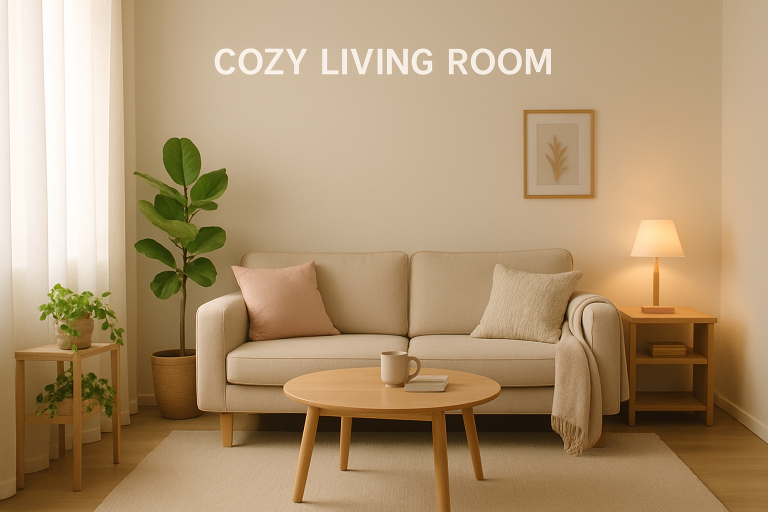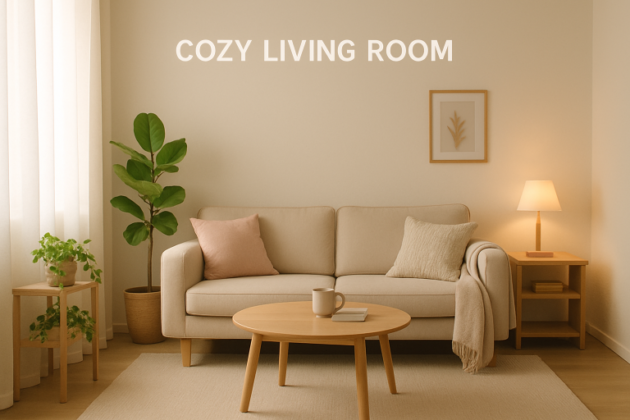Table of Contents
Introduction
In today’s fast-paced and demanding world, the importance of having a peaceful retreat within your own home has never been greater. Life’s responsibilities and stresses can easily accumulate, leaving you mentally and emotionally depleted by the end of each day. With the guidance of experts like Delray Beach FL real estate agent Candace Friis, many homeowners are learning to see their living spaces not just as places to reside, but as vital sanctuaries that support well-being, tranquility, and rejuvenation. A thoughtfully designed sanctuary elevates your home experience, offering a haven where you can recover, reflect, and regain a sense of balance amidst everyday chaos. Research in environmental psychology consistently finds that the design of your immediate environment can have a direct impact on your mental and emotional health, affecting your mood, productivity, and overall happiness.
Fortunately, by implementing a few intentional design and lifestyle changes, it is entirely possible to transform any home—regardless of its size or style—into a personal refuge. This transformation doesn’t require a complete overhaul but rather a mindful series of steps that foster relaxation, mindfulness, and happiness. Whether you live in a busy family home, a compact apartment, or a sprawling estate, following these comprehensive and actionable steps will help you create your at-home sanctuary and enjoy the restorative benefits it brings.
Declutter and Organize
A peaceful home begins with simplicity, clarity, and order. Research consistently indicates a strong link between clutter and elevated stress levels—an untidy home filled with unnecessary items can make it more difficult to relax and recharge. Start your sanctuary journey by methodically sorting through your belongings, keeping only what you truly need, use, or love. Letting go of items that no longer serve you can feel liberating, allowing new energy to flow through your space. Adopt creative and effective storage solutions, such as decorative baskets, open and closed shelving, storage ottomans, and closet organizers, to ensure that everyday items have a designated place. Using labels or color-coded bins can further streamline your organization, making it easier to maintain a calm, clutter-free atmosphere. As experts often say, “A cluttered space is a cluttered mind”—so embrace regular tidying routines and watch as your mental clarity and focus improve.
Incorporate Natural Elements
Introducing elements of nature into your home can have a soothing and immediate effect on your mood and physical health. Adding houseplants not only purifies the air by filtering out toxins but also serves as a visual reminder of growth, vitality, and tranquility. If you’re new to plant care, start with resilient options like pothos, peace lilies, or snake plants. Beyond greenery, integrating organic textures—such as untreated wood, river stones, bamboo, or natural fiber rugs and cushions—establishes a warm and grounding energy. Try placing a small tabletop water fountain in a key space to create gentle, soothing sounds that mimic the tranquility of a babbling brook. Even something as simple as opening your windows regularly to let in fresh air and the sounds of birdsong can reconnect you with the calming rhythms of nature. Such natural elements have been proven to lower anxiety, boost mood, and prime the body for rest and recovery, making them essential in any sanctuary-inspired interior.
Choose Calming Colors
The colors that surround you play a crucial psychological role in shaping your experiences and emotions at home. Soft, muted tones like sky blues, mossy greens, and gentle beige, taupe, or dove gray evoke feelings of tranquility, spaciousness, and balance. Cool colors tend to slow your heart rate and quiet your mind, creating spaces ideal for winding down or reflection. When considering a color palette, start with the core function of each room. Use subdued, restful hues in bedrooms and relaxation spaces, while allowing slightly brighter versions for gathering areas, if desired. For those not ready to repaint entire walls, subtle color shifts can be introduced through decorative pillows, art, throws, bedding, or even flowers. The result is a cohesive environment that feels intentional, unified, and restorative.
Optimize Lighting
Lighting is often underestimated but profoundly influential in establishing the mood and function of your home. Daylight is the gold standard—maximize sunshine by keeping window treatments sheer or pulling heavy curtains aside during the day. In the evening, switch over to layered lighting: a combination of table lamps, dimmable overhead fixtures, wall sconces, and candles can create a soft, enveloping glow. Consider using tunable LED bulbs that allow you to adjust the color temperature to suit your activity—cooler, brighter light for morning focus and warmer, dimmer light for evenings. Candles—safely placed, of course—can add a flickering element that signals relaxation, while string lights or fairy lights bring gentle whimsy to a bedroom or reading nook. Ultimately, flexible lighting helps you adapt your space for relaxation, entertainment, or productivity, while supporting your natural circadian rhythms for restful sleep.

Introduce Soothing Scents
Scent is one of the most powerful triggers for emotional states and lasting memories. Aromatherapy practices harness the properties of essential oils—such as lavender, chamomile, eucalyptus, and sandalwood—to reduce anxiety, uplift mood, and help with quiet reflection. Infusing your home with soothing scents can be achieved through a variety of methods, including ultrasonic diffusers, oil burners, incense, linen sprays, or naturally scented candles (made with soy or beeswax). Develop a scent ritual: perhaps lavender oil at bedtime, citrus in the kitchen, or cedarwood near your entryway. Pay attention to how different scents make you feel, and curate a collection that truly resonates with your sense of comfort and well-being. By making scent an intentional part of your routine, you can train your mind to associate home with relaxation and well-being, further deepening the sanctuary experience.
Create Dedicated Relaxation Spaces
Every sanctuary benefits from spaces set aside solely for rest and restoration. Whether you have a cozy window seat, a seldom-used corner, or an entire spare room, dedicate at least one area of your home to unwinding. This can become your reading nook, meditation zone, yoga studio, or simply a quiet corner with a comfy chair and a warm blanket. Furnish your retreat with thoughtfully chosen textures—a plush rug, soft lighting, and a basket of your favorite books or meditation tools. The act of intentionally carving out relaxation space signals to your mind and body that it’s time to let go and recharge. Over time, these cues reinforce positive self-care habits, making it easier to shift into a peaceful mindset just by entering your special spot.
Limit Technology
In our increasingly digital era, screens and gadgets have become both essential tools and constant distractions. While technology undoubtedly brings convenience, its overuse—especially in restful areas of the home—can contribute to anxiety, disrupted sleep, and difficulty truly unwinding. To preserve the calming nature of your sanctuary, make a conscious effort to limit technology in areas designated for relaxation. Establish tech-free zones, such as bedrooms, dining tables, or meditation nooks, and introduce “unplugged” hours where you set aside devices in favor of reading, journaling, stretching, or simply enjoying quiet moments. If possible, use analog alarm clocks; keep charging stations out of restful spaces, and consider using blue-light filters in the evening hours. By establishing clear boundaries around screen time, you reinforce your home’s role as a sanctuary for rest and restoration.
Personalize Your Space
Your home should be a direct reflection of your personality, beliefs, and passions. To foster a true sense of safety and belonging, fill your sanctuary with objects and art that resonate with your values and life journey. Decorate with meaningful artifacts collected during travel or gifts from loved ones, frame cherished family photos, and display your favorite books, artwork, or handmade pieces. Personal touches—including inherited furniture pieces, handmade crafts, or even framed inspirational quotes—contribute to the unique story of your space. As your connection to each room deepens, the restorative power of your sanctuary increases; it becomes not just a shelter, but a place where your spirit can rest and recharge.
Transforming your living environment into a sanctuary is a journey that rewards mindfulness, intention, and creativity. By carefully considering each element—organization, natural connections, soothing colors, layered lighting, scent, places for stillness, technology boundaries, and meaningful details—you will cultivate a peaceful haven that shelters and restores your well-being, day after day. The true beauty of a personal sanctuary lies in its evolution with you, becoming increasingly comforting and supportive as your needs and intentions change.
